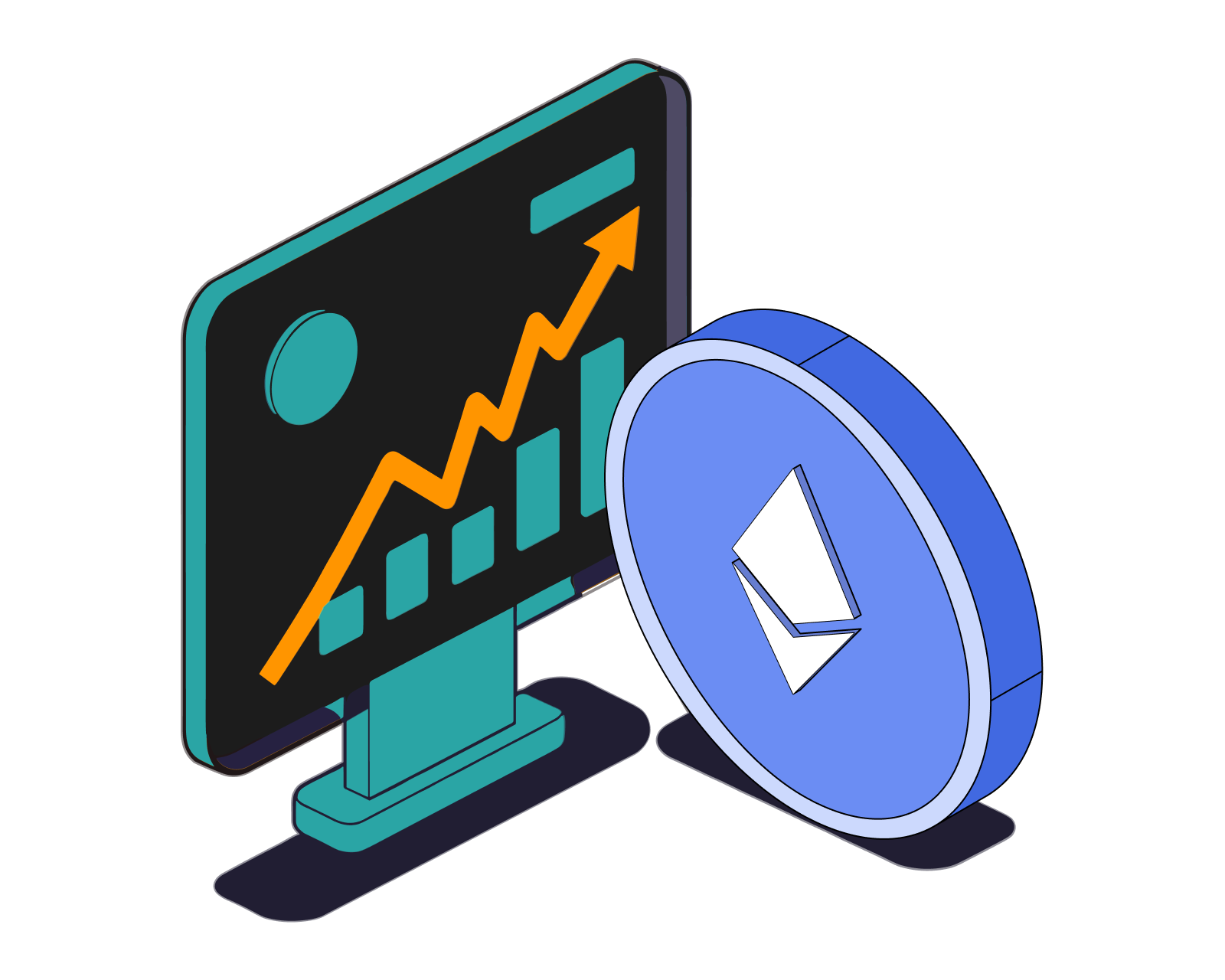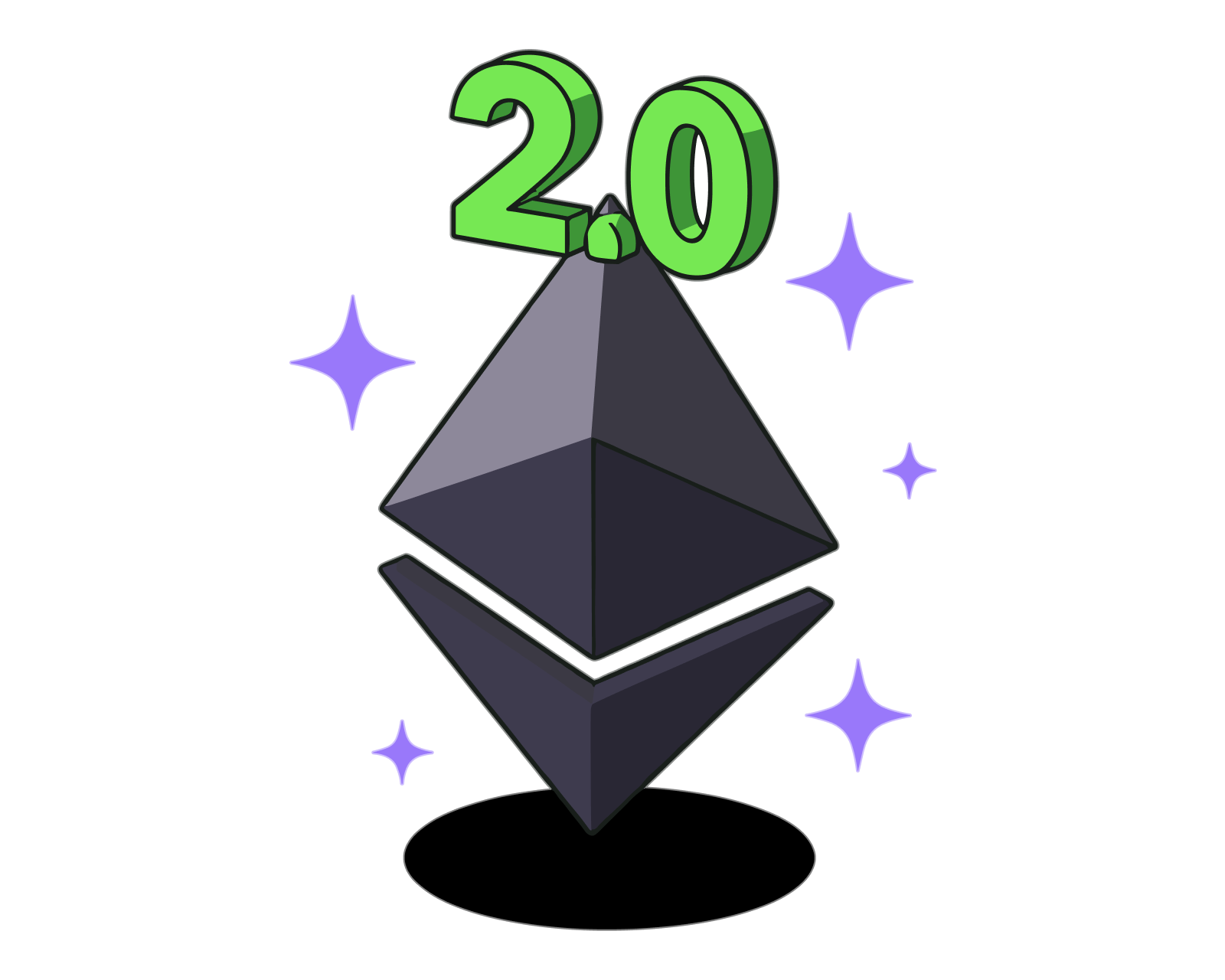What is Ethereum's monetary policy?

The History of Ethereum's Monetary Policy
While Ethereum's monetary policy isn't set in stone, we can nevertheless examine its history and make predictions about its future. To do that, we'll consider the total circulating supply of ETH over time, the rate that new ETH is added to the total supply, and the rate that existing ETH is burned (destroyed) or removed from the total supply.
On 15 September 2022, Ethereum successfully switched from ‘Proof-of-Work’ to ‘Proof-of-Stake.’ This marked a major turning point in Ethereum’s monetary policy. Ethereum used to employ a 'Proof-of-Work' consensus mechanism. In that system, miners who succeeded in extending the Ethereum blockchain by applying computing power to the hashing algorithm were rewarded in ETH, and new blocks were added approximately every 10-15 seconds.
Read more: What is Proof-of-Work Bitcoin Mining? When the Ethereum network launched in 2015, the block reward was initially set to 5 ETH. In other words, 5 ETH were added to the total supply every 10-15 seconds. Considering that the total circulating supply of ETH (ie. the "stock") at that point was relatively small, and that the issuance rate (ie. the "flow") was high, Ethereum started off with a low stock-to-flow ratio. This meant that the out-of-the-gate inflation rate was above 20% on an annual basis. However, as the total supply (stock) expanded, any additional supply would have diminishing impact. In other words, the stock-to-flow ratio increased. After just one year Ethereum's inflation rate had been reduced to the low teens (on an annual basis).
Read more: Learn about Ethereum's initial distribution and early supply.
At block 4,370,000, which was in October 2017, the block reward (flow) was reduced to 3 ETH in accordance with Ethereum Improvement Proposal (EIP) 649. At this point, annual inflation was less than 10% - and again, as supply (stock) gradually expanded, the relative inflation rate would continue adjusting downward.
At block 7,280,000, which was in February 2019, the block reward (flow) was reduced once again, this time to 2 ETH in accordance with EIP-1234. The stock-to-flow ratio thus increased further, corresponding to an annual inflation rate of 4.5% at the time.
Another important point to consider about Ethereum's monetary policy relates to EIP-1559 which, as of Aug 2021, introduced a mechanism for burning (destroying) a portion of the ETH that's already in circulation. The volume of ETH that's burned in accordance with EIP-1559 is dependent on the demand for usage of the network's resources, with more ETH being burned as demand increases. This means that, during bouts of intense transaction activity, it's possible for there to be periods when more ETH is burned than created. In other words, Ethereum may experience periods of deflation.
Read more: Get more details on EIP-1559 and how it works.
Finally, Ethereum transitioned away from a Proof-of-Work to Proof-of-Stake consensus model in line with the move towards "Ethereum 2.0," dropping ETH issuance by approximately 90%. Issuance is low enough that in conjunction with the changes made in EIP-1559, it’s possible for Ethereum’s total supply to contract over time. This can be visualized here.
The Future of Ethereum's Monetary Policy
As Ethereum continues to evolve, particularly with its full transition to Ethereum 2.0 and enhancements in scalability and efficiency, the monetary policy is likely to be influenced by several key factors.
One significant aspect is the ongoing development and implementation of Ethereum Improvement Proposals (EIPs). These proposals, which are vetted and approved through a decentralized governance process, have the potential to introduce changes that could further reduce ETH issuance, adjust staking rewards, or modify the burn mechanism introduced by EIP-1559. The active participation of the Ethereum community in these governance decisions ensures that monetary policy remains flexible and responsive to the needs of the network and its users.
Additionally, the shift towards more sustainable and scalable network operations under Ethereum 2.0 opens up new possibilities for economic policy adjustments. The reduction in ETH issuance following the transition to Proof of Stake (PoS) has already marked a significant shift towards a potentially deflationary model. This trend could be accentuated by increased network usage and transaction throughput, leading to higher burn rates through EIP-1559 and potentially making ETH even more scarce over time.
Looking ahead, Ethereum's role as a foundational layer for decentralized finance (DeFi), non-fungible tokens (NFTs), and other blockchain-based applications will also impact its monetary policy. As these ecosystems grow and mature, the demand for ETH as a form of paymen and collateral is expected to increase. This could lead to further discussions within the community about how best to balance ETH issuance, rewards, and burns to support a healthy and thriving network.
Furthermore, advancements in layer-2 scaling solutions and cross-chain interoperability may also influence Ethereum's economic model. By offloading transaction processing to secondary layers or facilitating seamless asset transfers between blockchains, Ethereum can maintain high levels of network activity and utility without proportionately increasing the burden on the network's core layer. This, in turn, could affect the dynamics of ETH demand, usage, and the overall monetary policy.
In conclusion, the future of Ethereum's monetary policy is likely to be characterized by careful consideration of network health, technological advancements, and the broader ecosystem's needs. Through a combination of community governance, forward-looking EIPs, and a commitment to innovation, Ethereum aims to maintain a robust and adaptable economic model that supports its long-term vision and utility.
Read more: How does governance work in Ethereum?
Related guides
Start from here →
How was ETH initially distributed?
Learn about the 2014 crowdsale, the initial distribution of ether (ETH), and why it's important.
Read this article →
How was ETH initially distributed?
Learn about the 2014 crowdsale, the initial distribution of ether (ETH), and why it's important.

What is ETH gas and how do fees work in Ethereum?
Learn about the unit for measuring transaction fees in Ethereum, get details on the Ethereum fee market, and discover how to customize the fees you pay.
Read this article →
What is ETH gas and how do fees work in Ethereum?
Learn about the unit for measuring transaction fees in Ethereum, get details on the Ethereum fee market, and discover how to customize the fees you pay.

What is EIP 1559?
Understand how EIP 1559 overhauled the fee market in Ethereum and what it means for ETH's circulating supply.
Read this article →
What is EIP 1559?
Understand how EIP 1559 overhauled the fee market in Ethereum and what it means for ETH's circulating supply.

How does governance work in Ethereum?
Why governance is needed, Ethereum governance in practice, the concept of credible neutrality, and more.
Read this article →
How does governance work in Ethereum?
Why governance is needed, Ethereum governance in practice, the concept of credible neutrality, and more.

What is Ethereum 2.0?
Learn about Ethereum's attempt to solve the blockchain trilemma with a move to Proof of Stake, sharding, and more.
Read this article →
What is Ethereum 2.0?
Learn about Ethereum's attempt to solve the blockchain trilemma with a move to Proof of Stake, sharding, and more.
STAY AHEAD IN CRYPTO
Stay ahead in crypto with our weekly newsletter delivering the insights that matter most
Weekly crypto news, curated for you
Actionable insights and educational tips
Updates on products fueling economic freedom
No spam. Unsubscribe anytime.



Start investing safely with the Bitcoin.com Wallet
Over wallets created so far
Everything you need to buy, sell, trade, and invest your Bitcoin and cryptocurrency securely

© 2025 Saint Bitts LLC Bitcoin.com. All rights reserved


